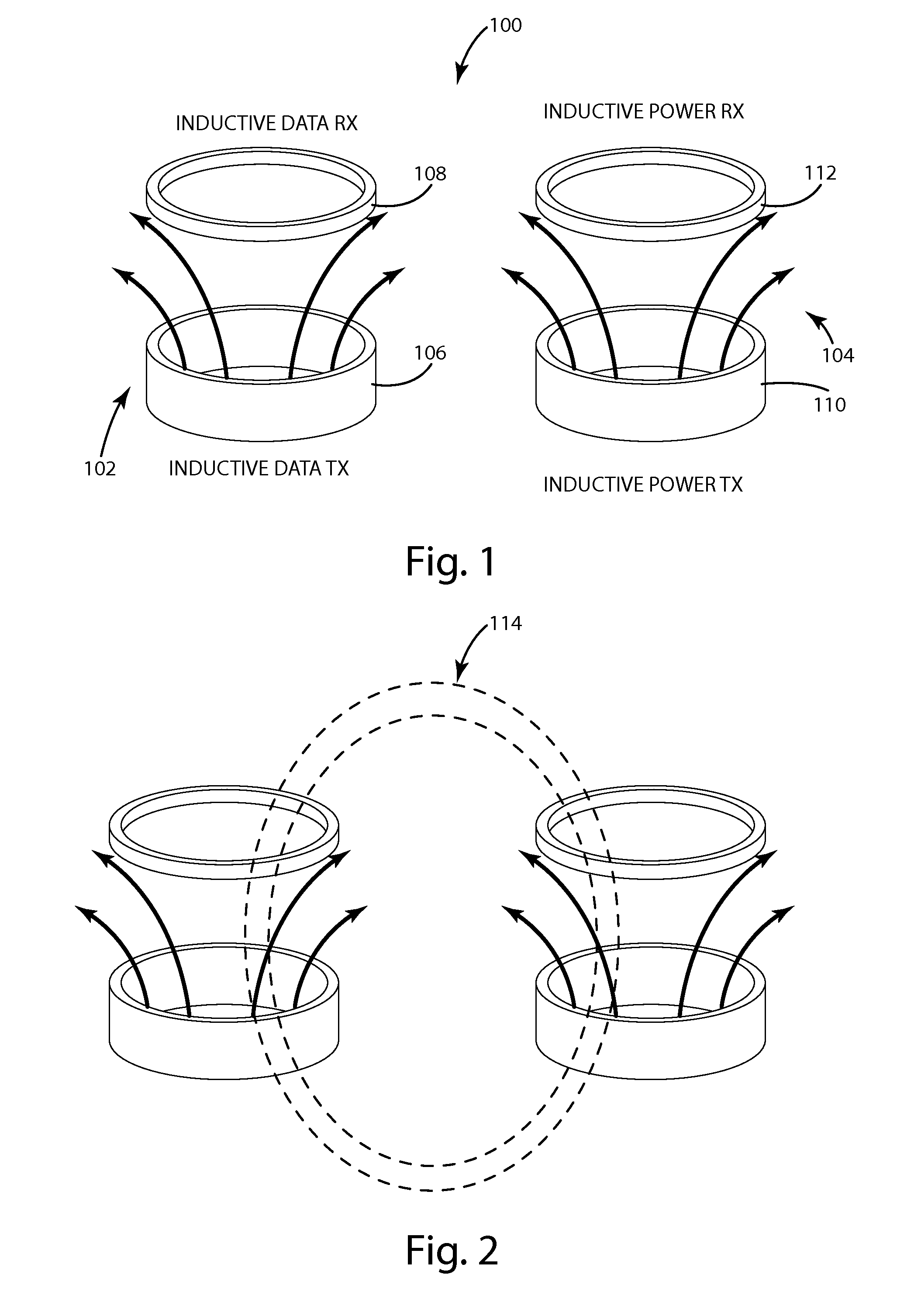Interference mitigation for multiple inductive systems
a technology of inductive system and interference mitigation, applied in the direction of electric locking circuit, charging station, transportation and packaging, etc., can solve the problems of reducing the efficiency of one or both systems, interrupting operation, and interfering with one another, so as to reduce interference, reduce interference, and reduce interference.
- Summary
- Abstract
- Description
- Claims
- Application Information
AI Technical Summary
Benefits of technology
Problems solved by technology
Method used
Image
Examples
Embodiment Construction
[0025]Interference can arise when multiple inductive systems operate in close proximity at the same time. For example, a modern automobile can integrate an inductive charging unit and a wireless communication system. The inductive charging unit can be used to inductively charge an automobile user's portable electronic devices and the wireless communication system can be used to perform a variety of vehicle functions, such as unlocking vehicle doors when a wireless key fob is present or enabling a vehicle power switch when the wireless key fob is present.
[0026]FIG. 1 illustrates a system 100 that includes an inductive data sub-system 102 and an inductive power sub-system 104 where interference can arise. In one embodiment, the inductive data sub-system 102 can be a wireless key fob system and the inductive power sub-system 104 can be an inductive charging unit for wirelessly charging portable devices, such as cell phones. In alternative embodiments, both sub-systems could be inductiv...
PUM
 Login to View More
Login to View More Abstract
Description
Claims
Application Information
 Login to View More
Login to View More - R&D
- Intellectual Property
- Life Sciences
- Materials
- Tech Scout
- Unparalleled Data Quality
- Higher Quality Content
- 60% Fewer Hallucinations
Browse by: Latest US Patents, China's latest patents, Technical Efficacy Thesaurus, Application Domain, Technology Topic, Popular Technical Reports.
© 2025 PatSnap. All rights reserved.Legal|Privacy policy|Modern Slavery Act Transparency Statement|Sitemap|About US| Contact US: help@patsnap.com



